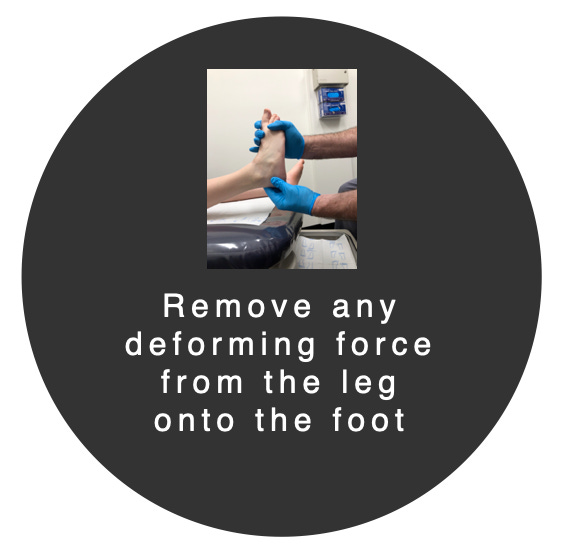Let's get this party started...
I will start with a discussion of Progressive Collapsing Foot Deformity (PCFD), and I will begin with the end of my lecture on this topic. I am starting at the end to impart two key charts I created summarizing my lecture. PCFD is the newer terminology for Adult Acquired Flatfoot Deformity (AAFD) or Posterior Tibial Tendon Dysfunction (PTTD). The PCFD language originated from a series of consensus statements in Foot and Ankle International (FAI).1-9 Agree or disagree with consensus statements (essentially a white paper); the precedent for them exists in orthopedics.
I believe in surgical principles because they are truths; "a fundamental truth or proposition that serves as the foundation for a system of belief or behavior or for a chain of reasoning." 10 Following evidence-based principles should produce consistent outcomes. The PCFD principles to me include:
"Operative procedures chosen must address the cause of the deformity and, most importantly, must address all components of the deformity to restore biomechanics and function."11
- Abyar et al. Tech Foot Ankle Surg 2019
We will have a much deeper discussion of how I arrived at the following surgical procedure recommendations for each deformity of PCFD. But first, I hope you find this chart helpful in PCFD cases. One term I use in the chart not well defined in the literature by part of the classification system put forth by the consensus group is subtalar joint (peritalar) subluxation/dislocation and subfibular impingement.
Here is an example of subtalar joint (peritalar) subluxation/dislocation –
Here is an example of subfibular impingement –
Finally, here is the promised chart –
If you enjoyed this blog, please share it, and let me hear from you. Stay diligent.
References:
1. de Cesar Netto, Cesar, Jonathan T. Deland, and Scott J. Ellis. "Guest editorial: expert consensus on adult-acquired flatfoot deformity." (2020): 1269-1271.
2. Myerson, Mark S., et al. "Classification and nomenclature: progressive collapsing foot deformity." Foot & Ankle International 41.10 (2020): 1271-1276.
3. de Cesar Netto, Cesar, et al. "Consensus for the use of weightbearing CT in the assessment of progressive collapsing foot deformity." Foot & ankle international 41.10 (2020): 1277-1282.
4. Sangeorzan, Bruce J., et al. "Progressive collapsing foot deformity: consensus on goals for operative correction." Foot & ankle international 41.10 (2020): 1299-1302.
5. C. Schon, Lew, et al. "Consensus for the indication of a medializing displacement calcaneal osteotomy in the treatment of progressive collapsing foot deformity." Foot & ankle international 41.10 (2020): 1282-1285.
6. Thordarson, David B., et al. "Consensus for the indication of lateral column lengthening in the treatment of progressive collapsing foot deformity." Foot & Ankle International 41.10 (2020): 1286-1288.
7. Hintermann, Beat, et al. "Consensus on indications for isolated subtalar joint fusion and naviculocuneiform fusions for progressive collapsing foot deformity." Foot & Ankle International 41.10 (2020): 1295-1298.
8. Johnson, Jeffrey E., et al. "Consensus on indications for medial cuneiform opening wedge (cotton) osteotomy in the treatment of progressive collapsing foot deformity." Foot & Ankle International 41.10 (2020): 1289-1291.
9. Deland, Jonathan T., et al. "Indications for deltoid and spring ligament reconstruction in progressive collapsing foot deformity." Foot & ankle international 41.10 (2020): 1302-1306.
10. https://www.google.com/search?q=definition+of+principles
11. Abyar, Eildar, et al. "Forefoot supination and medial column instability in the setting of AAFD: the role of the medial column." Techniques in Foot & Ankle Surgery 18.3 (2019): 132-140.








I commend you on starting this blog. Definitely a great place to have collegial collaboration.
In my training and practice, order of procedures followed exactly what you’re describing. Loosening soft tissue procedures, bony reconstructive efforts from proximal to distal, followed lastly by soft tissue tightening/ augmentation as needed proximal to distal.